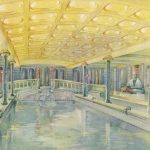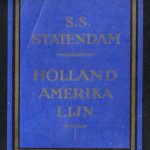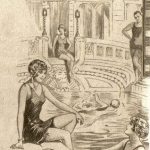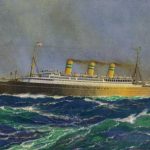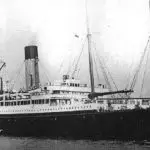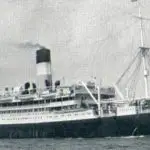The Unlucky Statendam
![]()
If the Nieuw Amsterdam can be considered Holland-America Line’s most fortunate vessel, then her pre-war running mate, the Statendam of 1929, is in the running for the title of least.
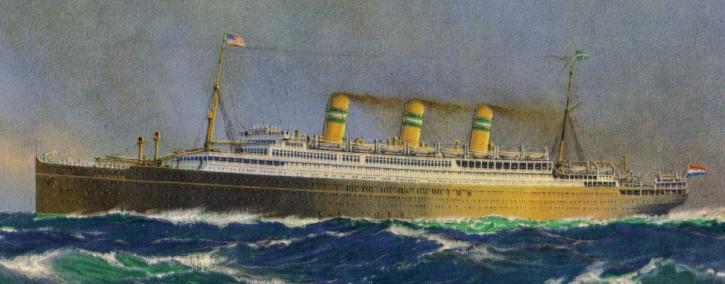
Work began on the Statendam in 1921, but her origins predated construction by at least ten years. A three funneled Statendam had been constructed by Harland and Wollf (in the slip where the Titanic had been created) and completed just in time to become a casualty of World War 1. Launched in July 1914, the 32,234 ton vessel was requisitioned in 1915 and allocated to the Cunard Line under the name of Justicia. When Cunard was unable to a muster a crew, she was passed on to White Star, who were able to staff her with the men from their recently lost Britannic. In July 1918, she was torpedoed and lost.


The new Statendam was to be slightly smaller than the lost vessel, at 29,511 tons. They were visually similar, but with her cruiser stern and shortened forward superstructure, the 1921 liner could easily be told at a glance from the earlier ship. Strikes, shortages, and a period of indecision after the inception of the new U.S. Immigration rules hampered work on the Statendam and she was not launched until September 1924. After that, work progressed fitfully, and in early 1927 she was removed from Harland and Wolff and towed to Schiedam, The Netherlands, where she was completed at the Wilton-Fijenoord shipyards.






When the 697 foot vessel made her maiden crossing in April 1929, after a delay of at least 14 years, she represented the last flourish of Edwardian elegance on the North Atlantic run, with her interiors being entirely pre-war and, in the era of the Bremen and Ile de France, a bit anachronistic. The original direct drive turbines, with which she had been designed, had been replaced by gear turbines and resulted in what was referred to as “the most efficient power plant afloat,” so in that regard, at least, the Statendam was as up to date as H.A.L. could make her. In fact, the power plant aboard the Nieuw Amsterdam was an enlarged version of that on the Statendam.
The Statendam carried 1,644 passengers in four classes (First, Second, Tourist and Third) and proved to be popular as both a liner and an cruise vessel, but her service life was to be a short one. Laid up at Rotterdam, The Netherlands, in December 1939, she was caught in the crossfire between Dutch forces and the Nazis in May 1940, and burned out after being struck by several bombs. She was scrapped in August of that year.
![]()
- 00000 dining room
- 00000 lounge 2
- 00000 promenade deck 2
- 00000 second class dining
- 00000 second class dining 2
- 00000 pool
- 00000 second class smoke
- 00000 staircase and hall 2
- 00000 second class verandah cafe
- 00000 lounge
- 00000 second class verandah cafe 2
- 00000 cabin
- 00000 palm court 2
- 00000a dining room 2
- 00000 staircase and hall
- 00000 page 1
- 00000 cover
- 00000 promenade deck
- 00000 pool 2
- 00000 suite
- 00000 palm court 1
- 00000 second class lounge 2
- 00000a dining room
- 00000 page 2
- 00000 second class lounge






